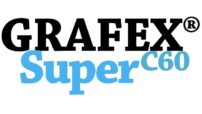Over the years we have conducted testing of our material via approximately 20 research labs with well over 600 testing results. Below is the results of testing that we received from just one of those labs. Avenues for functionalization and product utilization were also pursued.
The following information is a summary of the progress report received :
ABSTRACT: Graphitic Nano Onions LLC (GNO) has a process to produce Carbon Nano Onions in Chains (CNOC) that have a unique morphology. GNO sponsored an experimental study using the CNOC material to develop multifunctional polymer nanocomposite materials. The treatment was directed by GNO and the material was given to us for testing. This study demonstrated that new grades of CNOC with superior quality in terms of graphitic structure were developed. The material characterization results obtained in the study are discussed in detail in this report.
Our report on this activity is brief since the analytical service provided to GNO became routine for both the GNO team and the University team. The GNO experts used the analytical data to adjust the synthesis of CNOC and to improve the manufacturing process. This University team has performed more than 250 analyses of CNOC material by using sophisticated techniques such as:
Environmental Scanning Electron Microscopy (ESEM),
High Resolution Transmission Electron Microscopy (HRTEM),
X-Ray Diffraction (XRD),
Thermal Gravimetric Analysis (TGA),
Raman Spectroscopy,
Electrical Conductivity Measurements,
Mechanical Testing.
GNOC material is a novel carbon nanostructured material that has a unique spherical morphology. The CNOC material is catalyst free, lightweight and has hydrophobic nanoparticles. An interesting property of the material formed in this way is that it is electrically conductive on one side and electrically insulating on the other side.
Having nanoscale size effects, CNOC can be combined in host materials to produce changes in the photonic, catalytic, or other properties of the bulk material for use in virtually all types of composite applications. This material can measure strain and it can also detect cracks. These characteristics are suitable for developing new sensors required for health monitoring of lightweight structures. CNO chains are carbon onions linked together and have the advantages of being catalyst free, and highly electrically conductive.
The CNOC when compacted are highly electrically conductive and presently about 5-10% by weight of CNOC can be added to the epoxy to provide electrical conductivity. A limiting factor is the viscosity when it is too high for wetting micro fibers when making a laminated composite. The next step in the nanocomposite development is plasma etching to provide better dispersion and adhesion to the matrix. The plasma treatment will be controlled so that the electrical properties of the CNOC are not significantly affected. In general, a goal is sought to provide multi functionality to the material as in achieving the following: (i) having the greatest electrical conductivity possible, (ii) self-sensing to detect cracks, corrosion, and delamination in composites, and (iii) to do this without reducing the other properties of the matrix material.
CNOC must be spun into thread to provide a strong bulk material. The thread can be made completely of CNOC or it can be blended using two or more materials. The goal is to provide a strong thread with smart material properties that cannot be achieved by any other material system on earth. Multiple threads will be woven together to form a fiber. A major advantage of polymers based on CNOC nanomaterials is that the polymer or thread can be used in composite materials to form self-sensing materials. Engineering asset evaluation and condition monitoring using CNSC nanomaterials may have hundreds of applications in components where smart nanocomposites can be used for multifunctional properties improvement, self-sensing of damage, and possibly limited self-repair of the material. CNOC materials have been shown in the lab to have new properties and potential for improving structural performance along with self-test and monitoring composite conditions.
Given its unique morphology and structure, Grafex® is an excellent candidate for the following applications.
BIOMEDICAL MEDICAL RESEARCH
- Vitamin Supplementation:
- Toxin/free radical scavenger
- Scaffolding for human bone and cartilage regrowth
- Biocellurer beacons and pharmaceutical delivery platform
- Compatible polymer composites, for thermal cancer cell destruction
- MRI/radiology diagnostics
- INDUSTRIAL AREAS OF REASEARCH
- Molecular energy generation or storage
- Advanced composites
- Photovoltaic fuel cell applications
- Multi-functional active surfaces
- Hydrophobic coatings (airframes, marine surfaces)
- Composites for protective armor
- Electrostatic shielding
- Radar absorption
- Solar panel surfaces
- High temp heat sinks for LED lights
- Next generation strong/light polymers for 3D printing
- Industrial lubricants
- Super capacitor/batteries for electrical storage
- Water filtration including fracking water from gas production
- Electrical and thermal conductivity and water/ice mitigation coatings
